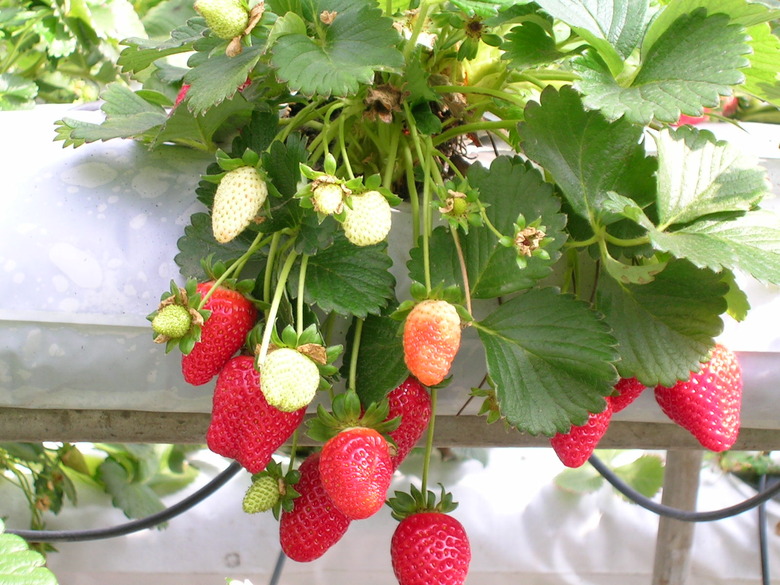How To Grow Everbearing Strawberries
Everbearing strawberries (Fragaria x ananassa) are a good option for home gardeners who want to harvest fresh strawberries but are working with small garden spaces. Everbearing strawberries are hardy in U.S. Department of Agriculture hardiness zones 5 to 9.
What Are Everbearing Strawberries?
There are three types of strawberries, which are grouped based on when they produce a crop and the number of crops they produce.
- **June-bearing strawberries:** June-bearing plants produce one large crop of fruit in early summer beginning the year after they are planted.
- **Everbearing strawberries:** These strawberries produce three crops of fruit in the same season that they are planted. Expect to harvest the main crop in the summer and small crops in the spring and fall.
- **Day-neutral strawberries:** Day-neutral varieties are a newer category that is a subset of everbearing strawberries. Rather than producing fruit during specific harvest periods, they fruit continuously during the growing season, including their first growing season, into early fall, until the first frost.
It is important to check the label when purchasing strawberry plants to determine which category they fall into, as there are no observable differences between the different types of plants.
Tip
Everbearing strawberries can produce three crops of fruit in the year they are planted.
Planting Everbearing Strawberries
Everbearing strawberries are typically grown in what is known as a hill system, which involves planting the strawberries in multiple rows and leaving a foot of space between plants. Each row has two to four plants. In the hill system, the runners—stems that grow along the ground and produce new "daughter" plants—are removed and each plant is cultivated as a single plant.
Site Selection
Strawberries grow best in a soil pH between 5.8 and 6.8. Avoid planting strawberries where other strawberries, tomatoes, peppers and potatoes have grown in the last three years. This is because all of these plants are susceptible to the same disease-causing pathogens, including those that cause verticillium wilt, that can linger in the soil for several years.
All strawberry varieties should be planted in full sun and well-draining soil. Raised beds can help promote drainage.
Planting Day
Plant strawberries in the afternoon or on an overcast day. When planting strawberries, you want the soil to cover the top of the roots. The crowns of the plants, however, should not be covered. A layer of mulch that is 3 to 4 inches thick and made of wood chips or straw can help conserve soil moisture.
Everbearing Strawberry Care
When growing everbearing strawberry plants, in addition to removing the runners, also remove the flowers that emerge for the first six weeks of every growing season, approximately until the beginning of July. This allows the new plants to put energy towards becoming established and increase fruit production and fruit size in late summer.
Make sure that your strawberry plants receive about an inch of water a week during fruit production.
It is also important to weed your strawberry beds often, as weeds compete for water and nutrients.
Tip
Remove all flowers from your everbearing strawberry plants for the first six weeks after planting to allow the plants to become established and improve fruit yield and size.
When to Fertilize Everbearing Strawberries
You can help everbearing strawberry plants become established by fertilizing them at planting time with 2 tablespoons of a 10-10-10 fertilizer dissolved in a gallon of water. Each plant should receive a cup or two of this solution.
Everbearing strawberries should be fertilized every three to four weeks during the growing season, although the more organic matter in the soil, the less nitrogen that the plants will need. A soil test can help you determine what nutrients are lacking in the soil so that you can amend it accordingly.
References
- North Carolina State Extesion: Fragaria x Ananassa
- University of Illinois Extension: Growing Strawberries
- Ohio State University Extension: Growing Strawberries in the Home Garden
- Iowa State University Extension and Reach: Planting Strawberries in the Home Garden
- West Virginia University Extension: Growing Strawberries for Beginners
- South Dakota State University Extension: Strawberries in South Dakota
